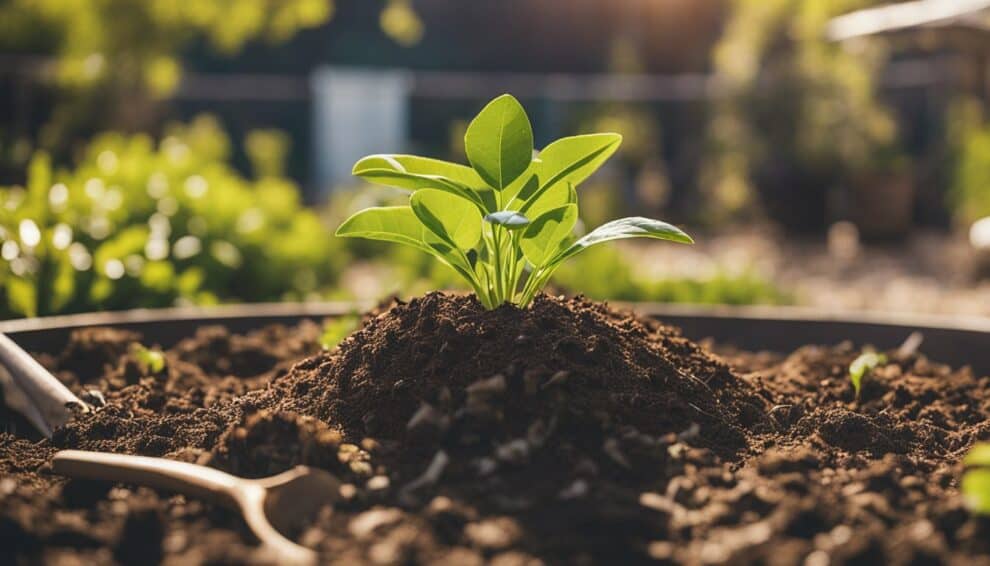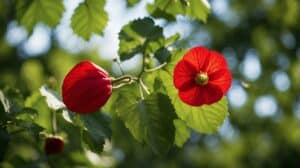Caragana Arborescens, also known as the Siberian Peashrub, is a beautiful and hardy shrub that is perfect for beginners looking to add some greenery to their garden.
This shrub is native to Siberia and Mongolia, but it has become a popular choice for gardeners around the world due to its ability to thrive in a variety of climates and soil types.

Caring for Caragana Arborescens is relatively easy, but there are a few things that beginners should keep in mind.
This guide will provide tips and tricks for planting, watering, fertilizing, and pruning your Siberian Peashrub to ensure that it grows healthy and strong.
Whether you are a seasoned gardener or just starting out, this guide will help you care for your Caragana Arborescens and enjoy its beauty for years to come.
Understanding Caragana Arborescens
Species Overview
Caragana arborescens, commonly known as Siberian peashrub, is a deciduous shrub that belongs to the family Fabaceae.
It is native to Siberia and Mongolia and has been widely cultivated in North America and Europe as an ornamental plant.
The shrub can grow up to 15 feet tall and has a spread of 12 feet. It produces yellow flowers in the spring and pea-like pods in the summer.
Growth Habit
Siberian peashrub is a hardy plant that can tolerate a wide range of soil types and pH levels.
It prefers well-drained soil and full sun exposure, but can also grow in partial shade.
The shrub has a deep root system that allows it to withstand drought conditions. It is a fast-growing plant that can reach maturity within 5 years.
Ideal Climate
Siberian peashrub is well-suited for cold climates and can withstand temperatures as low as -40°F.
It is also tolerant of heat and humidity, making it a versatile plant for a variety of climates. The shrub is hardy in USDA zones 2-7.
Overall, Caragana arborescens is a low-maintenance plant that is easy to care for.
With proper planting and maintenance, it can provide a beautiful addition to any landscape.
Planting Your Siberian Peashrub

Choosing the Right Location
Before planting your Siberian Peashrub, it’s important to choose the right location.
This shrub thrives in full sun to partial shade and prefers well-drained soil. Avoid planting in areas with standing water or heavy clay soil.
It’s also important to consider the mature size of the shrub, which can reach up to 15 feet tall and 10 feet wide.
Choose a location with enough space for the shrub to grow and spread out.
Soil Preparation
Proper soil preparation is crucial for the success of your Siberian Peashrub. Start by removing any weeds or grass from the planting area.
Then, loosen the soil to a depth of at least 12 inches and mix in organic matter such as compost or aged manure.
This will improve soil structure and provide essential nutrients for the shrub.
Planting Techniques
When planting your Siberian Peashrub, dig a hole that is twice as wide as the root ball and just as deep.
Gently remove the shrub from its container and loosen any tangled roots.
Place the shrub in the hole and backfill with soil, tamping down gently to remove any air pockets.
Water thoroughly and add a layer of mulch around the base of the shrub to retain moisture and suppress weeds.
Remember to water your Siberian Peashrub regularly during the first growing season to help establish a strong root system.
With proper planting and care, your Siberian Peashrub will provide years of beauty and enjoyment in your landscape.
Maintenance and Care

Caragana arborescens is a low maintenance plant that is perfect for beginner gardeners.
However, there are a few things to keep in mind to ensure that your Siberian peashrub stays healthy and vibrant.
Watering Requirements
Siberian peashrubs are drought-tolerant plants, but they still require regular watering, especially during the first few years of growth.
Water your plant deeply once a week, making sure that the soil is moist but not waterlogged.
During hot and dry weather, you may need to water more frequently to prevent the soil from drying out completely.
Pruning and Shaping
Pruning and shaping your Siberian peashrub is essential to maintain its shape and promote healthy growth.
Prune your plant in late winter or early spring before new growth appears.
Remove any dead, diseased, or damaged branches, as well as any crossing or rubbing branches.
You can also shape your plant by removing any unwanted shoots or branches.
Fertilizing and Mulching
Siberian peashrubs do not require frequent fertilization, but you can apply a balanced fertilizer in early spring to promote healthy growth.
Mulching your plant with organic matter, such as compost or shredded leaves, can help retain moisture and suppress weeds.
Pest and Disease Management
Siberian peashrubs are generally pest and disease resistant, but they can be susceptible to aphids and spider mites.
If you notice any signs of infestation, such as curled leaves or webbing, you can spray your plant with a neem oil solution or insecticidal soap.
Regularly inspecting your plant and removing any dead or diseased branches can also help prevent pest and disease problems.
By following these simple maintenance and care tips, you can enjoy a healthy and beautiful Siberian peashrub in your garden for years to come.
Propagation Methods

Seed Collection and Sowing
Caragana arborescens can be propagated by seeds.
The best time to collect seeds is in late summer or early fall when the seed pods have turned brown and are dry.
The seeds should be collected and stored in a cool, dry place until they are ready to be sown.
To sow the seeds, prepare a seedbed by loosening the soil and removing any weeds or debris.
The seeds should be sown in shallow furrows and covered with a thin layer of soil.
Water the area gently, but thoroughly, and keep the soil moist until the seedlings emerge.
Cuttings
Caragana arborescens can also be propagated by cuttings. Cuttings should be taken in early summer when the new growth is still soft and flexible.
Select a healthy stem and cut a 4-6 inch section just below a node.
Remove the leaves from the bottom half of the cutting and dip the cut end in rooting hormone.
Prepare a potting mix of equal parts sand and peat moss and fill a small pot with the mixture.
Make a hole in the center of the potting mix and insert the cutting. Firm the soil around the cutting and water well.
Cover the pot with a plastic bag to create a humid environment and place in a bright, but indirect light.
Check the cutting regularly for signs of growth and remove the plastic bag once the cutting has rooted.
Once the cutting has rooted, it can be transplanted into a larger pot or directly into the ground.
Frequently Asked Questions

What are the optimal growing conditions for Caragana arborescens?
Caragana arborescens, also known as Siberian pea shrub, thrives in full sun and well-drained soil.
It can also tolerate a range of soil types, including sandy, loamy, and clay soils.
This shrub is hardy and can withstand harsh winters, making it a great choice for colder climates.
Can you start a Siberian pea shrub from a cutting?
Yes, you can start a new Siberian pea shrub from a cutting.
Take a cutting from a healthy plant in the spring or early summer, and plant it in a pot filled with well-draining soil.
Keep the soil moist and the cutting in a shaded area until it develops roots.
Once the roots have developed, you can transplant the shrub to its permanent location.
How do you care for a caragana hedge?
To care for a caragana hedge, prune it regularly to maintain its shape and size.
Water it deeply and infrequently, allowing the soil to dry out slightly between watering. Fertilize the hedge in the spring with a balanced fertilizer.
Additionally, remove any dead or diseased branches to keep the hedge healthy.
What are the steps to properly plant a Siberian pea shrub?
To plant a Siberian pea shrub, choose a location with full sun and well-drained soil.
Dig a hole that is twice as wide and deep as the root ball of the shrub.
Place the shrub in the hole, making sure the top of the root ball is level with the soil surface. Backfill the hole with soil and water the shrub deeply.
Mulch around the base of the shrub to retain moisture and suppress weeds.
How do you prune Caragana arborescens?
To prune Caragana arborescens, use clean, sharp pruning shears to remove any dead or diseased branches.
Additionally, prune the shrub in the spring to maintain its shape and size. Cut back any branches that have grown too long or are crossing over other branches.
Avoid pruning more than one-third of the shrub’s total growth in a single year.
How does Siberian peashrub spread?
Siberian pea shrub can spread by seed or by root suckers.
It is important to remove any seedlings or suckers that appear outside of the desired growing area to prevent the shrub from becoming invasive.
Additionally, consider planting Siberian pea shrub in a contained area, such as a raised bed or planter, to prevent it from spreading too much.














